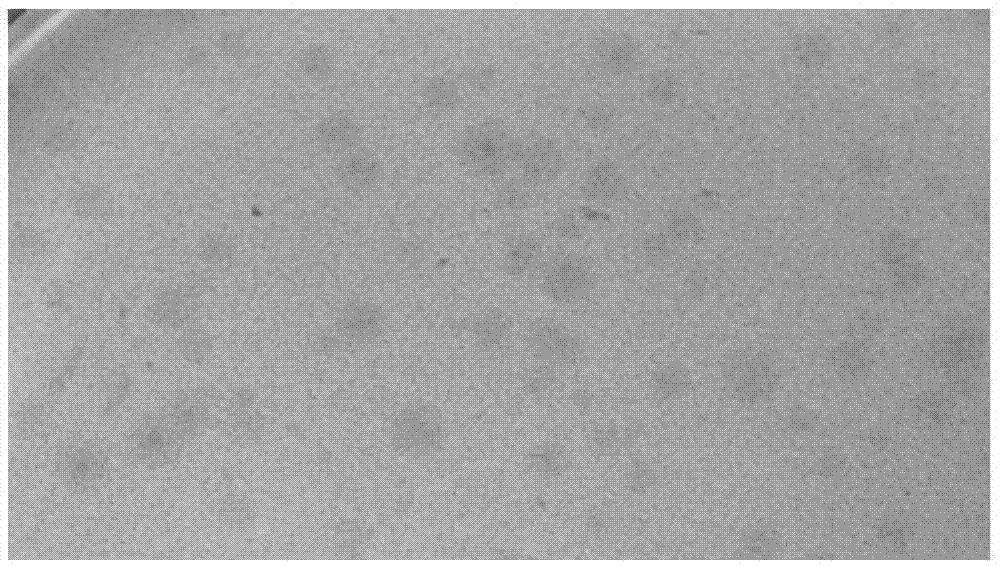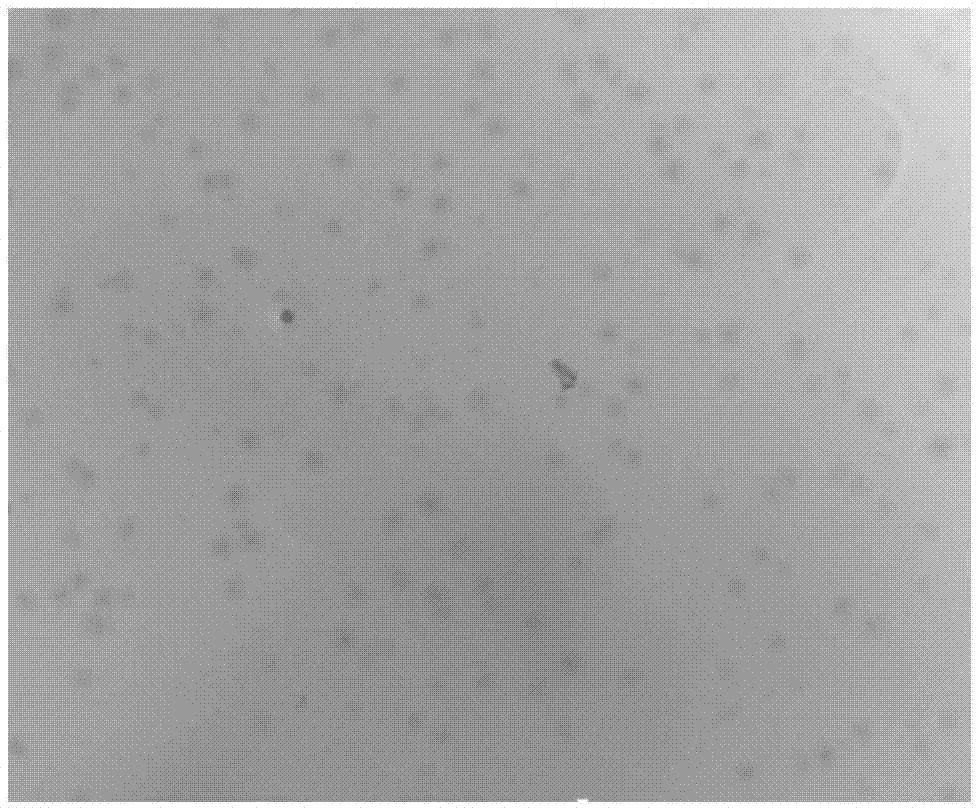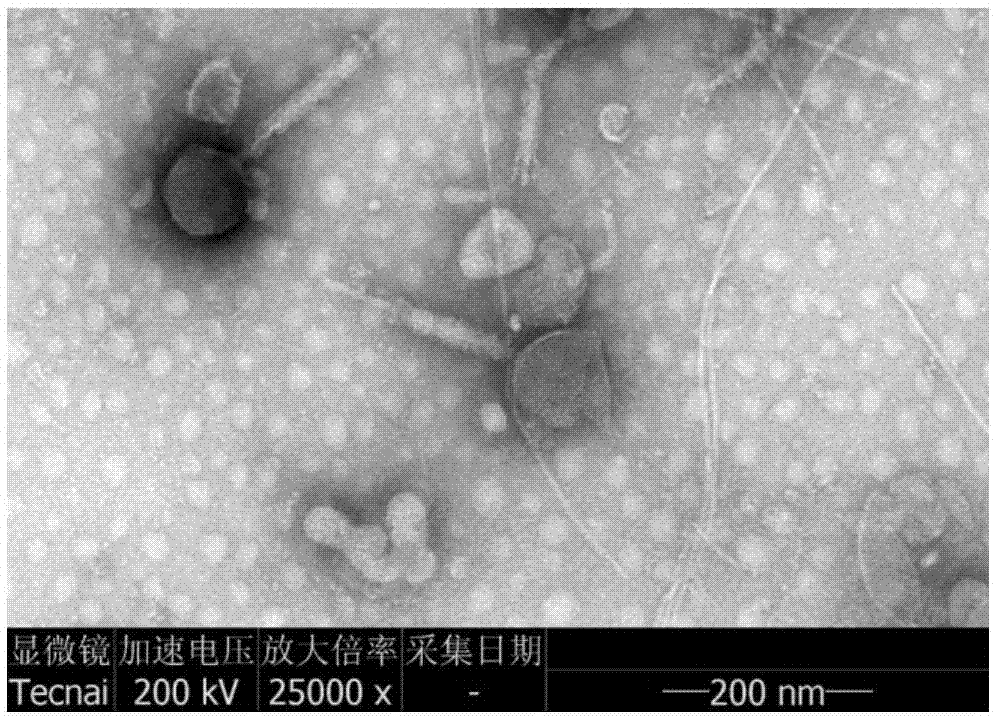Separated paddy bacterial blight bacterial phage and application thereof
A technology of rice bacterial blight and bacteriophage, which is applied in the direction of virus/phage, application, and microbial-based methods, can solve problems such as lack of phage resources, different species, and no guiding significance for the control of rice bacterial blight, and achieve good results. Preventive effect, disease prevention, wide application effect
- Summary
- Abstract
- Description
- Claims
- Application Information
AI Technical Summary
Problems solved by technology
Method used
Image
Examples
Embodiment 1
[0034] Screening and purification of phage
[0035] 1. Collection of soil samples
[0036] The soil samples in the present invention were collected from Wuxi City, Jiangsu Province, and were soil in farmland (Table 1). Use five-point sampling method to collect, that is, take at least 5 points from each sampling point, first shovel the topsoil of 1 to 2 cm, and then take the soil with a depth of 5 to 10 cm, put it in a bag, and store in a refrigerator at 4°C .
[0037] 2. Isolation of bacteriophages against rice bacterial blight in soil samples
[0038] Pre-amplified Xanthomonas oryzae PXO99A(OD 600 :0.2~0.6) (Table 1), take 5mL of each of the 10 bacterial suspensions and mix them in an Erlenmeyer flask, weigh 5g of soil sample in the Erlenmeyer flask, and place it on a shaker at 28°C, 190r / min Incubate overnight. The soil suspension shaken overnight was centrifuged to remove soil particles and bacterial cells, and the supernatant was taken, and filtered and sterilized with a steril...
Embodiment 2
[0047] Preparation and Electron Microscopic Observation of High Concentration Phage
[0048] 1. Preparation of phage
[0049] Add the bacteriophage Xoo_sp15 to the pre-prepared PXO99A bacterial suspension (OD: 0.3), incubate overnight at 28℃, 190r / min shaker, centrifuge the co-culture at 12000rpm for 5min, take the supernatant, and use 0.22μm nitrocellulose Sterilize by membrane filtration to obtain a phage suspension, which is to be further concentrated.
[0050] 2. Phage counting method (titer)
[0051] Dilute the obtained phage sample in a 10-fold ratio, take 100 μl of the sample with a certain dilution ratio, and spread the double-layer plate, and calculate the number of plaques by taking an appropriate ratio. Dilution count as figure 2 .
[0052] 3. Concentration of phage
[0053] Prepare 30ml Xoo_sp15 phage suspension (10 10 PFU / ml), the obtained phage suspension was subjected to ultracentrifugation, 110000g, centrifuged for 2h, the supernatant was discarded, the phage was suspe...
Embodiment 3
[0058] Effect of Bacteriophage in Medium on the Growth of Xanthomonas oryzae Blight
[0059] Preparation of Xoo_sp15 phage suspension (10 10 PFU / ml): Prepare two sets of test tubes, put 5ml of NB liquid medium in each test tube, transfer the prepared Xanthomonas oryzae pv. oryzae bacteria PXO99A into the test tube, culture it in a shaker at 28°C, 190r / min. Turbidity (OD: 0.6~0.8). No phage was added to the first set of test tubes, and 300 μl of Xoo_sp15 phage suspension was added to the second set of test tubes. The two groups of test tubes were placed in a shaker at 28°C and 190r / min for 12 hours, and the OD value was measured every 3 hours to observe the difference in the growth of Xanthomonas oryzae PXO99A after different treatments.
[0060] The results show that when there is no phage added, PXO99A grows normally without any inhibition. When the bacteriophage Xoo_sp15 suspension was added, the growth state of PXO99A was inhibited to a certain extent, the growth was relativel...
PUM
 Login to View More
Login to View More Abstract
Description
Claims
Application Information
 Login to View More
Login to View More - R&D
- Intellectual Property
- Life Sciences
- Materials
- Tech Scout
- Unparalleled Data Quality
- Higher Quality Content
- 60% Fewer Hallucinations
Browse by: Latest US Patents, China's latest patents, Technical Efficacy Thesaurus, Application Domain, Technology Topic, Popular Technical Reports.
© 2025 PatSnap. All rights reserved.Legal|Privacy policy|Modern Slavery Act Transparency Statement|Sitemap|About US| Contact US: help@patsnap.com



